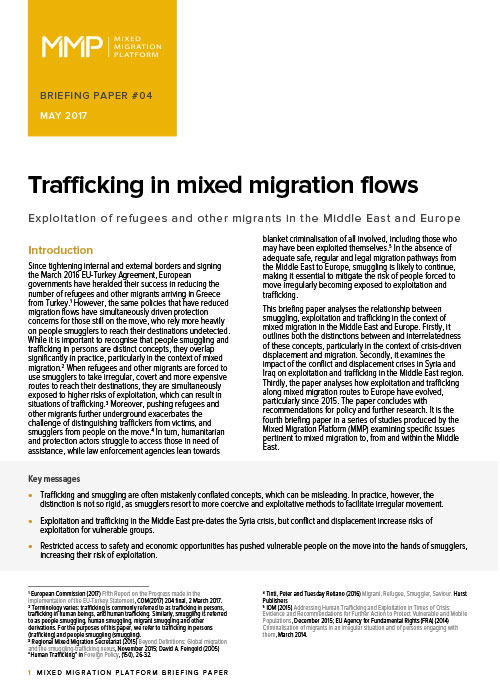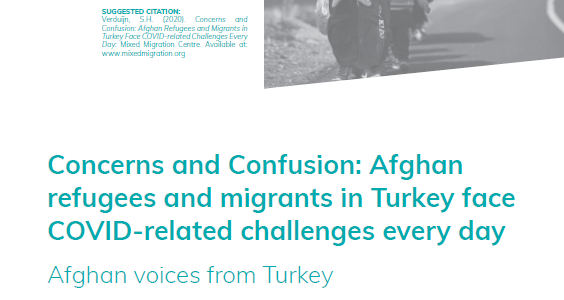
Trafficking in mixed migration flows:
Exploitation of refugees and other migrants in the Middle East and Europe
Since tightening internal and external borders and signing the March 2016 EU-Turkey Agreement, European governments have heralded their success in reducing the number of refugees and other migrants arriving in Greece from Turkey. However, the same policies that have reduced migration flows have simultaneously driven protection concerns for those still on the move, who rely more heavily on people smugglers to reach their destinations undetected. While it is important to recognise that people smuggling and trafficking in persons are distinct concepts, they overlap significantly in practice, particularly in the context of mixed migration.
When refugees and other migrants are forced to use smugglers to take irregular, covert and more expensive routes to reach their destinations, they are simultaneously exposed to higher risks of exploitation, which can result in situations of trafficking. Moreover, pushing refugees and other migrants further underground exacerbates the challenge of distinguishing traffickers from victims, and smugglers from people on the move. In turn, humanitarian and protection actors struggle to access those in need of assistance, while law enforcement agencies lean towards blanket criminalisation of all involved, including those who may have been exploited themselves. In the absence of adequate safe, regular and legal migration pathways from the Middle East to Europe, smuggling is likely to continue, making it essential to mitigate the risk of people forced to move irregularly becoming exposed to exploitation and trafficking.
Download

